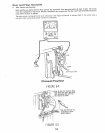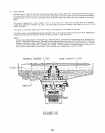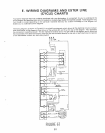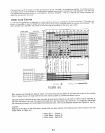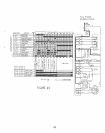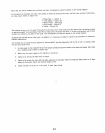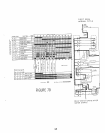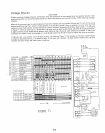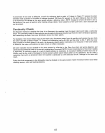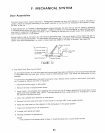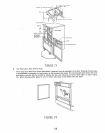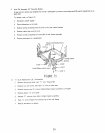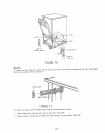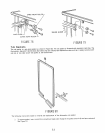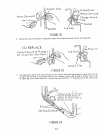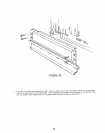
To determine if the timer is defective, attach the voltmeter lead to point #3 shown in Figure "/! leaving the other
voltmeter lead attached to the white or common terminal, 120 Volts AC present at this point indicates that the timer
is not defective. No voltage at this point wouid indicatea defective timer, NOTE: Always be certain the timer is set to
the portion of the cycle in question when making voltage checks, Some segments of the cycle have a short duration and
can be misse&
Continuity Check .........
An alternate method of checking the timer isto disconnect the machine from the power source and make a continuity
check_This continuitycheck of timer switches may bemadeby disconnectingthe lead from the timer terminals in question,
and connecting the leads from your ohmmeter across the timer switch_
For example, if the motor will not start in the wash cycle, disconnect power from the machine and remove the wire from
the timer's BU_BK terminal (Figure 71)_ Connect one ohmmeter toadto BU-BK and the other to BU-Y With the timer
knob rotated to the wash phaseof the cycle, the ohmmeter shoutd register continuity or no resistance, If the timer switch
is defecUve the meter will indicate an open circuit or infinite resistance,
All timer switches may be checked in the same manner by referring to the Ester line chart and wiring diagram, and
connectng the ohmmeter leads to the correct combination of terminaIs. NOTE: Correct interpretation of the meter reading
is important. A continuity check of a switch should indicate no resistance.. A resistance reading of other than zero or
infinity could be the result of damaged or burnt contacts which would reduce power to the component, Do not make a
continuity check with an ohmmeter when the machine is connected to a live eIectrical circuit. Damage to the meter wilt
result.
Other electrical componentsin the dishwasher may be checkedin the same manner. Someresistance wil! be noted when
checking motors, coils and heating elements,
67



